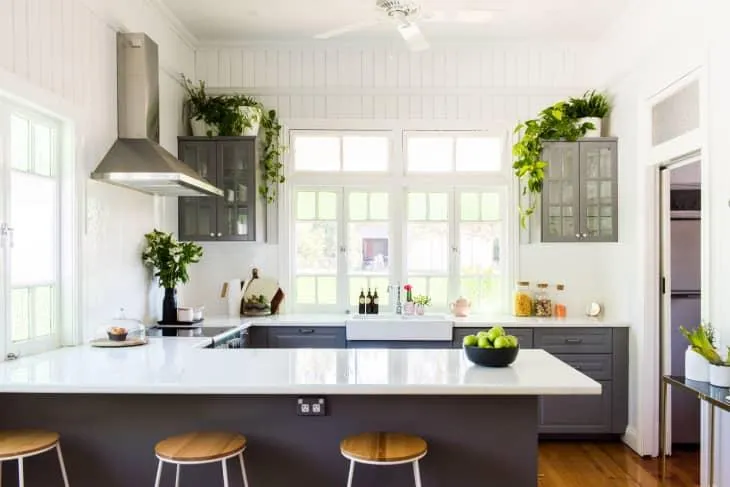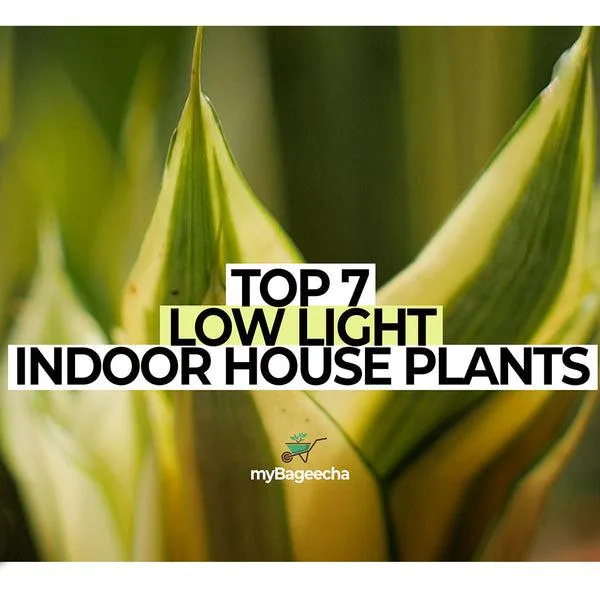The Top 10 Underrated Houseplants (And Why You Should Grow Them)
While popular houseplants like pothos and snake plants seem to get all the attention, there are plenty of lesser-known indoor plants that are just as beautiful and low-maintenance. From my experience as an avid houseplant collector, some of the most underappreciated varieties can make wonderful additions to your home. In this article, I’ll explore 10 underrated houseplants that deserve more love.
1. Chinese Evergreens (Aglaonema)
Chinese evergreens come in a beautiful variety of colors and leaf patterns, from bright green to variegated shades of cream and pink. They thrive in low to medium light and don’t need much water – perfect for those of us with busy schedules! I have a red-leaf Chinese evergreen that has been growing strong for over two years with very little care. These plants add gorgeous foliage to any space while remaining extremely low maintenance.
2. Peperomia
Peperomias come in hundreds of varieties that range from succulent-like to vine-like. They have unique leaves in shapes like heart, round, or elongated and enjoy humidity. I have a watermelon peperomia that has thrived on my kitchen windowsill with only occasional watering. Its cute round leaves in shades of green and pink brighten up the space. Despite their good looks, peperomias don’t receive as much buzz as other popular houseplants. They are definitely worthy of more attention.
3. Cast Iron Plant (Aspidistra)
With its strappy leaves and ability to tolerate low light, the cast iron plant got its name for being nearly un-killable. I have seen these plants survive serious abuse and neglect. They don’t mind dry conditions and do well in outdated rooms with little natural light. I gave my office cast iron plant only occasional watering for over a year with minimal growth – but it remained unswayed. How’s that for resilient? These tough yet attractive plants are perfect for beginners and low-maintenance households.
4. Snake Plant (Sansevieria)
While snake plants are quite popular, their striking vertical leaves deserve even more recognition, in my opinion. My snake plant has survived for over five years in my sons’ room with little light or care – they basically forget it exists! These dramatic plants come in various heights and shades of green, yellow, and dark brown stripes. They purify indoor air and withstand neglect, yet add architectural interest to any space. Snake plants may seem overhyped, but in reality, their low-fuss beauty and hardiness can’t be beat.

5. ZZ Plant (Zamioculcas zamiifolia)
Also known as the zanzibar gem, ZZ plants feature thick succulent-like stalks topped with deep green leaves. They prefer low to medium light and thrive on infrequent watering – basically ideal for humans with busy schedules. ZZ plants have impressive drought tolerance; rot is rarely an issue. Their unique zig-zag leaves add textural interest to any spot. ZZ plants remain largely overlooked compared to similar popular indoor varieties. But as anyone who’s grown one knows, these hardy beauties are true champions that earn their place among indoor plants.
6. Grape Ivy (Cissus rhombifolia)
Grape ivy vine adds fullness and greenery to any space. Its matte deep green leaves and ability to trail beautifully over shelves and ledges make it an excellent hanging or tabletop plant. I’ve seen gorgeous specimens climbing sturdy branches in offices and homes. Grape ivy thrives in medium to low indirect light with occasional watering and pruning to maintain its shape. Its undemanding care requirements mean it suits amateur indoor gardeners very well. Cissus rhombifolia remains overlooked despite its cheering disposition and versatility in home and commercial spaces.
7. Peace Lily (Spathiphyllum)
With its glossy heart-shaped leaves and occasional blooms of fragrant white blossoms, peace lilies brighten any room. They thrive in low-medium lighting and will inform you when they need water by drooping their leaves. I remember a large peace lily living for years in my grandmother’s kitchen window that bloomed almost seasonally and became her pride and joy. These striking plants do well in bathrooms and are essentially care-free as long as they’re not left too dry or wet. Despite being very low maintenance inside, peace lilies deserve more love as excellent houseplants.
8. Dieffenbachia (Dumb Cane)
Dieffenbachia, or dumb cane, adds an architectural element with its thick stems and stunning leaves patterned all over in greens, creamy whites, and dark spots or bars. The varieties available range from squat to towering. I grew a large dumb cane in my living room for two years that reached 5 feet tall without complaint. These eye-catching plants demand little care besides moderate water and thrive in medium light conditions indoors. Yet dumb canes remain virtually unknown compared to more iconic houseplants. It’s time these beauties be appreciated for their good looks and resilience.
9. Philodendron
With over 500 varieties, philodendrons offer lots of eye-catching leaf shapes and colors like heart-shaped, arrowhead, and velvety burgundy shades. Many varieties are climbing vines perfect for hanging baskets or poles. The sculptural heartleaf philodendron grows beautifully bushy without support as well. Having pruned philodendrons regularly over the years, I can say they bounce back quickly and are very tolerant of varied conditions indoors. More folks ought to discover these versatile indoor beauties that brighten up rooms effortlessly with minimal care.

10. Ponytail Palm (Beaucarnea recurvata)
With its striking thick cascading leaves resembling a pony’s tail, the ponytail palm is one of the more unique underrated indoor plants. Its stiff foliage adds architectural elegance and movement. From my experience growing one near an east-facing window, ponytail palms thrive in low to medium indirect sunlight and tolerate infrequent watering. These striking architectural specimens aren’t as common as other popular houseplants, but deserve more recognition for their dramatic air-purifying foliage and adaptability to various indoor settings. A ponytail palm complements contemporary decor beautifully while being very easy to care for.
Hopefully this list inspires you to try some new underrated indoor plants that deserve more love! From my experience as an avid indoor gardener and plant collector, these varieties generally thrive with low to moderate care. While they may lack the hype of more iconic houseplants, underrated indoor greenery like Chinese evergreens, peperomias, and ponytail palms add ambiance and life indoors with fewer fussy requirements. Don’t be afraid to branch out from the standards – experimenting with a variety of textures, shapes, and lesser-known plants will greatly enrich your indoor plant collection and brighten any interior space.
Do you have any other underrated houseplants you’d recommend? Feel free to share in the comments below! Indoor plants continue to be such a joy, whether rares specimens or the ones that keep living despite our neglect. Their beauty and resilience never cease to amaze me.
| Spider Plant | Easy to care for and very low maintenance. Thrives in low to medium light. Adds texture and movement to spaces. |
| Snake Plant | Virtually indestructible. Thrives with neglect and infrequent watering. Provides vertical interest and survives low light conditions. |
| Peperomia | Comes in many varieties with interesting foliage patterns. Tolerates low humidity and light. Adds colorful accents to decor. |
| Pothos | Very low maintenance. Adaptable to various light conditions. Trails beautifully over shelves and edges. Removes toxins from indoor air. |
| Chinese Evergreen | Low light plant with beautiful foliage. Comes in many colors and patterns. Thrives with average homecare. Lasts for years with proper care. |
FAQ
-
Are succulents underrated houseplants?
Basically yes, succulents are kinda underrated as indoor plants. While many folks admire them, not everyone knows how easy they are to care for. Succulents don’t need much water or attention to thrive. Maybe their simplicity causes them to get overlooked sometimes.
-
Which succulents make great starter plants?
Some top succulent picks for beginners would be jade plants and snake plants. Both are quite hardy and tolerant of mistakes. The jade plant is basically impossible to overwater, and the snake plant can go longer periods without a drink. According to plant experts, they are nearly “idiot proof” houseplants. On the other hand, there are beautiful but finicky succulents you may want to avoid at first, like echeveria.

-
How often should succulents be watered?
Most succulents only need water when the soil has had time to fully dry out. Appear it generally works best to wait until the soil is dry and the leaves start looking a bit shriveled before watering again. Neglecting them for too long isn’t a problem either – succulents are amazingly tough and can go for weeks without a drink! The key is giving them infrequent but thorough soakings so the water drains out the bottom. Perhaps try testing the soil with your finger first.
-
Do succulents need special soil?
Regular potting soil is generally not the best choice for succulents. It tends to retain too much water which can cause root rot. A fast-draining soil composed of lots of grit, gravel or perlite works much better. You can purchase commercial succulent or cactus soil blends or make your own soil mixture using 1 part peat moss, 1 part perlite or gravel, and 1 part compost. The well-draining soil lets excess water readily escape without sitting and sogging the roots.
At the same time, pots with proper drainage holes help wick moisture away too. Terra-cotta works nicely. Using a pot a size too large for the plant also lets the roots spread while allowing airflow around them.
Is this confusing? Let me know if you have any other questions! Providing the right growing conditions from the start sets succulents up for success indoors.
-
Should I give succulents fertilizer?
Fertilizing succulents is debated amongst plant enthusiasts. Most agree that fertilizer is unnecessary for healthy, actively growing succulents. The infrequent watering they prefer also means they do not require extra nutrients. Stunted or struggling plants in mineral-deficient soil may see benefits from occasional dilute foliar or water feedings during the growing season. Digging deeper, one school of thought is that fertilizer can cause succulents to grow faster than their roots can support, making them prone to damage. On the other hand, too little access to minerals limits building bulk and producing colorful foliage. Moderation appears key as usual.

-
What are some top succulent varieties for indoor growing?
Some succulents stunningly well-suited to indoor conditions include haworthia with their clustered translucent leaves, beautiful echeveria displaying rosette shapes and vivid colors, and etiolated senecio or string-of-pearls extending fantastic tassels. Kalanchoe with their colorful leaf margins and clusters also do nicely inside, and who couldn’t love a funky aloe plant? For a chatty larger specimen consider an elegant snake or oxygen plant. How’s that – did I include some top performers to pique your interest? Let me know if you need any other suggestions! Succulents offer an amazing range perfect for passive plant lovers.
-
Can succulents be propagated from leaves?
Yes indeed, propagating succulents from leaves is a fun way to multiply your collection! Simply pull off a plump succulent leaf and set the end down directly on dry soil. Spritz with water occasionally until roots sprout, then continue watering normally when the leaf shrivels up. Success rates vary but ranges from 50 to 90 percent depending on species. Make sure to let the ends callous over for a few days before rooting. Soon you’ll have an whole new plant! Give the lil’ budding rosettes plenty of sun once sprouted. It’s a super easy method to “grow” more succulents and suddenly find yourself with stunning propagations.
